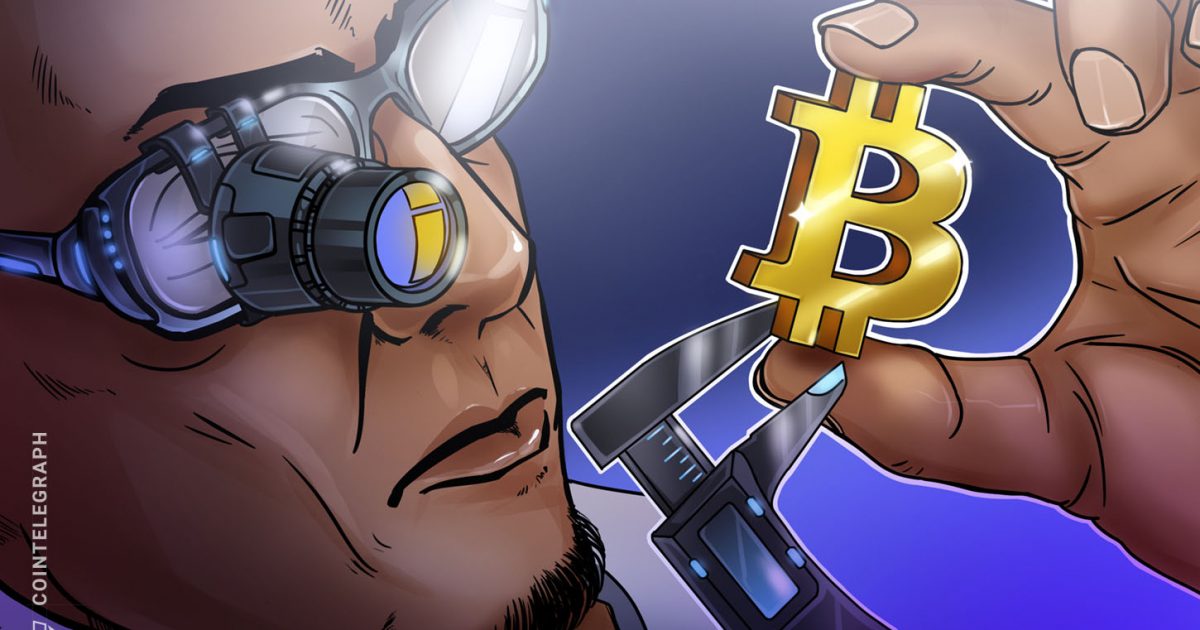Two weeks ago, few investors would have expected Bitcoin (BTC) price to rally any higher than $20,000. In fact, most had forecast a $30,000 BTC price by mid-2022 or late 2023 at best.
This means that many holders were likely caught by surprise as BTC price surged to $34,800 just 17 days after crossing the $20,000 mark.
Generally, analysts expect a sharp correction to follow Bitcoin’s 150% gain since November, but currently, there are no fundamental indicators that support this point of view.
Despite the recent bullish euphoria surrouning Bitcoin’s price action, the digital asset faced a significant drop as the price fell by $5,600 in 3 hours. Over $1.2 billion in liquidations followed that red candle, and typically this sort of move would raise alarm and lead analysts to forecast a potential trend reversal.
Each time Bitcoin makes a new high, investors expect some form of correction. Despite failing to break through the $34,500 resistance, the price quickly bounced from its sub- $28,000 dip on Jan. 4. This event might have monetarily spooked some buyers, but looking under the hood, it is a very bullish sign.
During the past week, Bitcoin’s dominance rallied to its highest level since March 2017, reaching 73%. Significant purchasing activity from institutional investors has been tied to the movement, including Grayscale’s addition of 72,950 BTC in December.
Moreover, investments from MicroStrategy, Ruffer Investment, MassMutual, and SkyBridge Capital are further indisputable evidence of the institutional inflow. Thus, BTC is becoming their preferred and almost exclusive investment option among cryptocurrencies.
Bitcoin’s dominance drop triggered a mini altcoin season
Regardless of the moves of professional traders, retail traders have an enormous impact on altcoins. Therefore, the Bitcoin rally created an opportunity for an alt season and DeFi-related tokens appear to be benifitting most.
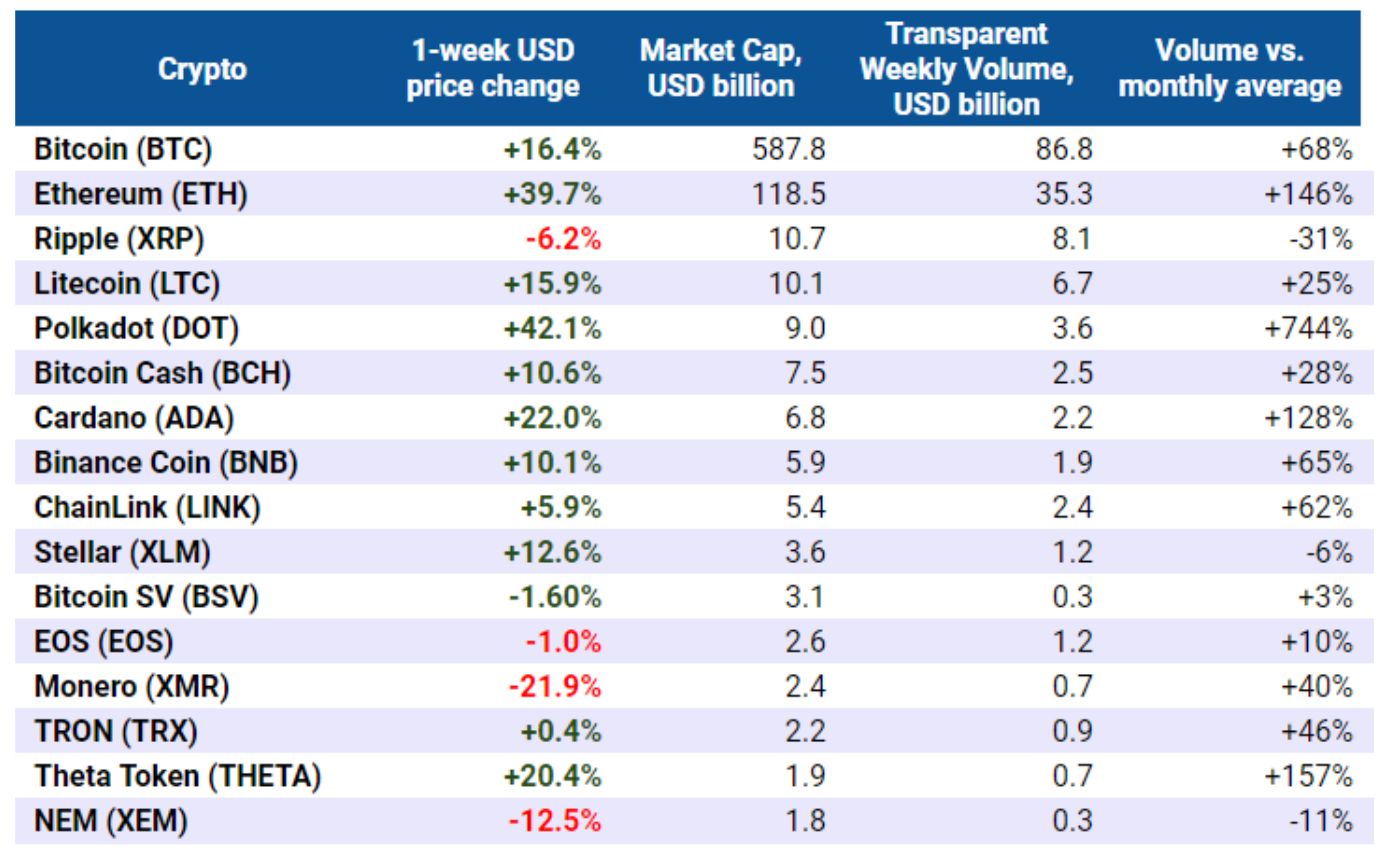
In the past week, Bitcoin outperformed the top-15 altcoins, which climbed 9% on average. More importantly, the overall volume has skyrocketed, eliminating any doubts about weekends or holiday pumps with low market participation.
Grayscale’s GBTC premium has normalized
The Grayscale Bitcoin Trust (GBTC) premium peaked at 41% on Dec. 21 but has since adjusted to its 90-day average at 19%. It is worth noting that only qualified institutional clients are allowed to acquire shares directly from Grayscale. The remainder of the traders need to buy it on the secondary market and this is the reason for some of the distortions.
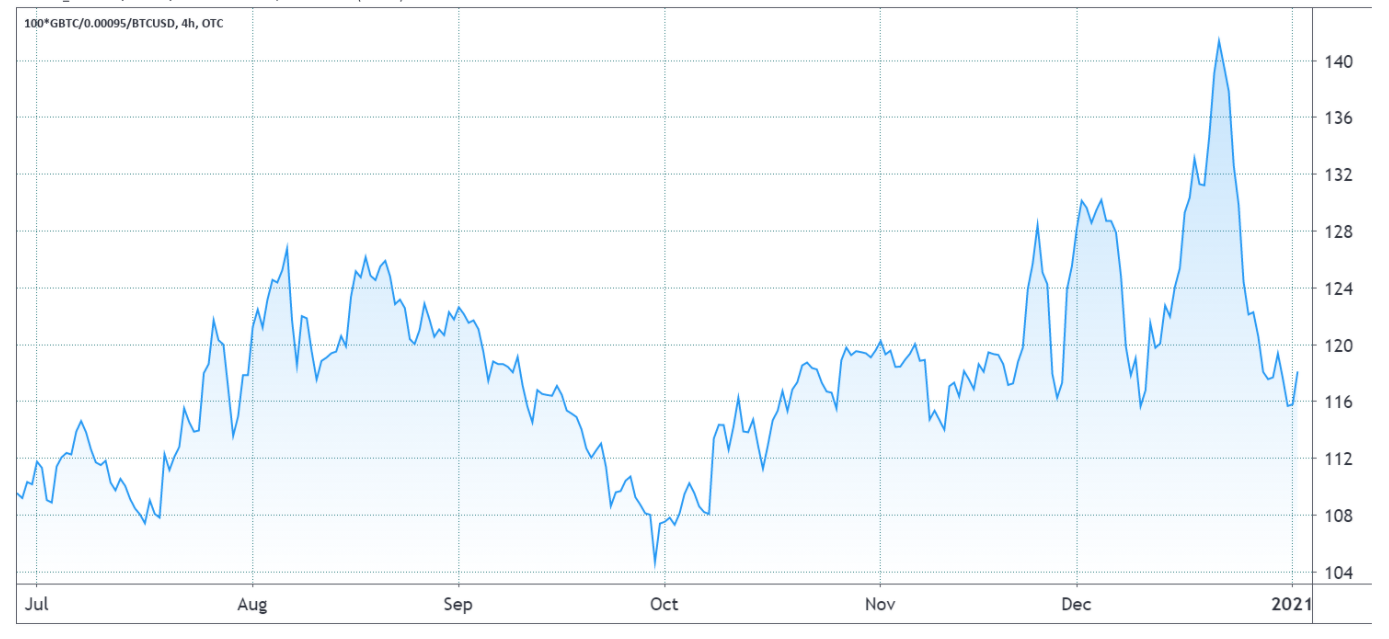
This extraordinary level can be partially explained by the temporary suspension of new shares being issued. By halting the offer to institutional clients, any additional demand needs to be met by secondary sales, thus creating pressure for a larger premium.
Perpetual futures funding is holding steady
Professional traders tend to dominate longer-term futures contracts with set expiry dates. Thus, by measuring how much more expensive futures are versus the regular spot market, a trader can gauge their bullishness level. The 3-month fixed-calendar futures should usually trade with a 1.5% or higher premium versus regular spot exchanges.
Whenever this indicator fades or turns negative, this is an alarming red flag. Such a situation, also known as backwardation, indicates that the market is turning bearish.

The above chart shows that the indicator briefly held levels above 5%, flirting with overbought levels. Nevertheless, it has been holding above 3% despite the recent sub $28,000 dip on Jan. 4.
Therefore, the indicator has held above the minimum 1.5% threshold, indicating optimism from professional traders. This data is a slightly positive reading, as the recent unexpected swing has not shaken buyers.
On the other hand, if cascading liquidations had caused longs to deleverage this would have been worrisome.
Social network activity peaked
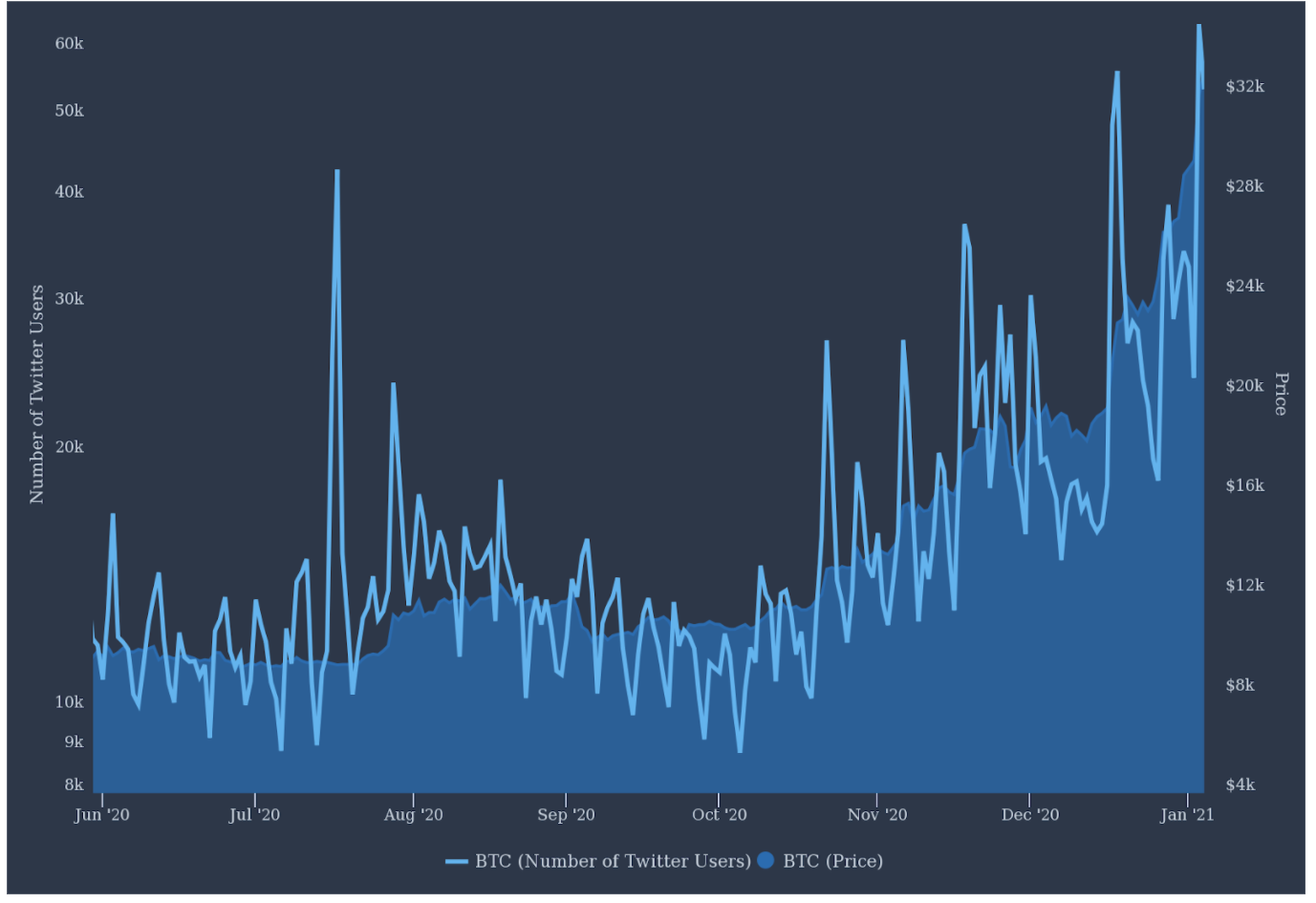
Data from TheTie also shows that a recent BTC price increase occurred while tweets related to ‘Bitcoin’ reached the highest level seen since Dec. 2017.
While a significant bump in Twitter activity does not necessarily equal vigorous retail buying, it certainly helps gather more attention as the cryptocurrency continues its uptrend.
Options put-to-call ratio
The best way to gauge overall market sentiment is to measure whether more activity is going through call (buy) options or put (sell) options. Generally speaking, call options are used for bullish strategies, whereas put options are for bearish ones.
A 0.70 put-to-call ratio indicates that put options open interest lag the more bullish calls by 30% and is therefore bullish.
In contrast, a 1.20 indicator favors put options by 20%, which can be deemed bearish. One thing to note is that the metric aggregates the entire BTC options market, including all calendar months.
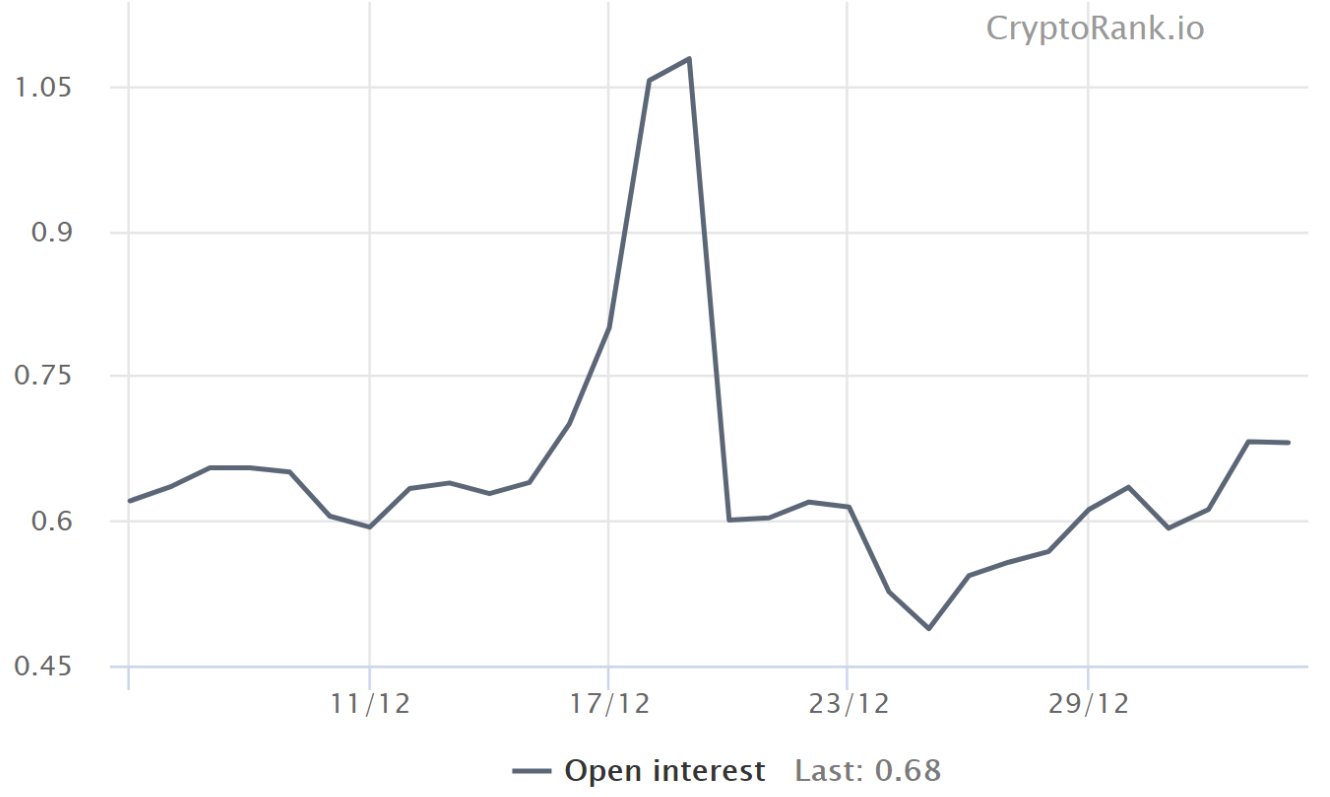
Over the past week, investors have been leaning to downside protection strategies. As a result, the put-to-call ratio increased to 0.68, from 0.56 on Dec. 27. Therefore, the indicator has returned to its 3-month average, favoring the more bullish call options by 32%.
This data shows that investors optimism remains relatively steady after the 17% BTC price increase over the last week.
Overall, each of the five indicators discussed has sustained a neutral-to-bullish range. Professional traders have kept their bullish stance despite the Jan. 4 price swing and this is an encouraging outcome for bulls.
As BTC quickly recovered the $31,000 support, bulls showed theri confidence by adding positions after every dip. To conclude, there are no signs of exhaustion or excessive leverage from buyers.
The views and opinions expressed here are solely those of the author and do not necessarily reflect the views of Cryptox. Every investment and trading move involves risk. You should conduct your own research when making a decision.

